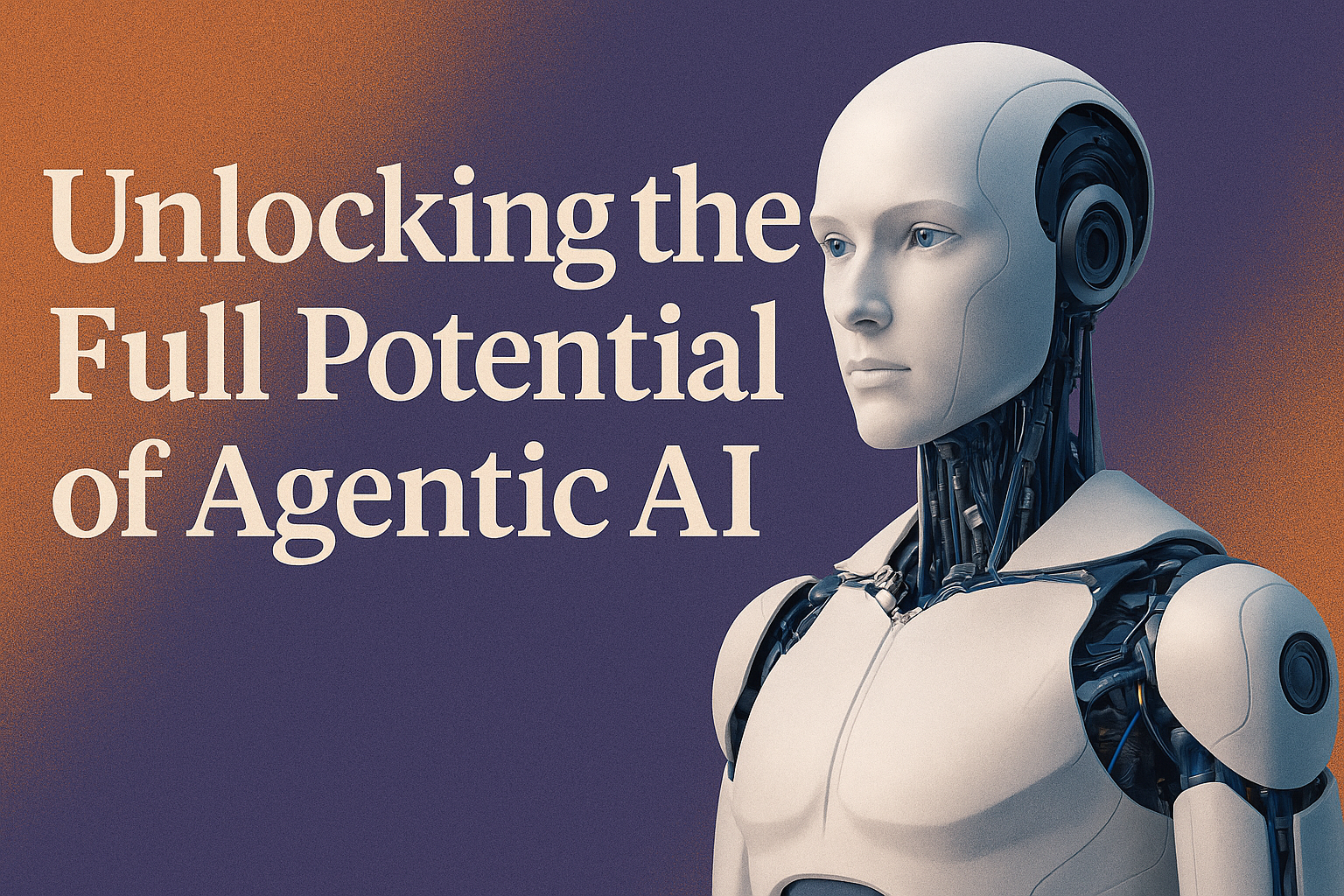
Secrets of the Trade: Unlocking the Full Potential of Agentic AI
Agentic AI, with its ability to act independently and make decisions, is transforming the way we approach technology.
Unlike traditional AI, which requires detailed programming and constant supervision, Agentic AI operates with autonomy, adapting to its environment and solving problems dynamically.
But what makes these systems so powerful, and how can you unlock their full potential?
In this blog, we’ll uncover the secrets of the trade for Agentic AI, exploring how developers and organizations can design intelligent systems that are not only autonomous but also ethical, scalable, and highly effective in real-world applications.
The Core Principle of Agentic AI: Autonomy with Purpose
At the heart of Agentic AI lies its autonomy. But what makes autonomy meaningful is purpose.
These systems are designed to operate with a clear understanding of objectives, which they pursue by dynamically adapting to changing environments.
For instance:
- A healthcare agent doesn’t just analyze patient data—it identifies risks, suggests preventative measures, and adjusts treatment plans based on real-time updates.
- A smart manufacturing system autonomously optimizes workflows, predicts maintenance needs, and resolves bottlenecks without human intervention.
This combination of autonomy and purpose is the key to Agentic AI’s transformative potential.
Secrets of the Trade: Key Techniques for Unlocking Agentic AI
Define Clear, Multi-Tiered Goals
One of the most overlooked aspects of Agentic AI development is goal-setting. To maximize autonomy, systems must be designed with multi-tiered goals: high-level objectives supported by smaller, actionable tasks.
- Secret: Use hierarchical task planning to break down complex objectives into manageable sub-goals.
- Example: In logistics, an AI agent tasked with optimizing delivery routes might set sub-goals like reducing fuel consumption, avoiding delays, and prioritizing fragile packages.
Leverage Simulation Environments
Testing and training Agentic AI in real-world environments can be expensive, risky, and time-consuming. Simulation environments offer a controlled space for agents to learn, adapt, and optimize their behavior.
- Secret: Tools like Unity ML-Agents and OpenAI Gym allow developers to simulate complex environments for training agents in various scenarios.
- Example: Self-driving cars trained in simulations encounter millions of virtual scenarios—like sudden pedestrian crossings—before being tested on actual roads.
Prioritize Context Awareness
For an agent to act autonomously, it must understand the context in which it operates. Context-awareness enables AI systems to interpret real-world variables and make informed decisions.
- Secret: Integrate sensors, natural language understanding, and real-time data feeds to improve situational awareness.
- Example: Smart home assistants adjust lighting and temperature based on user behavior, time of day, and even external weather conditions.
Incorporate Ethical Constraints
One of the trade secrets of successful Agentic AI is embedding ethical decision-making into the system’s core. Autonomy without ethical considerations can lead to unintended consequences.
- Secret: Use frameworks like the Ethical AI Toolkit to ensure agents act within predefined moral and legal boundaries.
- Example: In healthcare, AI agents prioritize patient privacy and ensure compliance with HIPAA or GDPR regulations.
Enable Self-Improvement Through Feedback Loops
Agentic AI systems excel when they can learn and improve from their experiences. Feedback loops allow agents to assess the outcomes of their decisions and adjust future strategies.
- Secret: Implement reinforcement learning to reward desirable outcomes and penalize poor decisions.
- Example: A customer service chatbot refines its responses based on user satisfaction scores, gradually becoming more effective at resolving queries.
Unveiling Hidden Potential: How Agentic AI Creates Value
Solving Complex, Multi-Faceted Problems
Traditional AI struggles with problems that involve multiple conflicting variables. Agentic AI thrives in these scenarios, finding creative solutions that balance competing demands.
- Example: In disaster response, autonomous drones assess the situation, prioritize rescue efforts, and deliver supplies to areas that need them most.
Reducing Human Workload
Agentic AI handles repetitive and time-consuming tasks, freeing humans to focus on higher-level strategic work.
- Example: In cybersecurity, Agentic AI systems monitor networks, identify threats, and deploy countermeasures autonomously, reducing the burden on human analysts.
Accelerating Innovation
By acting independently, Agentic AI can explore new possibilities and uncover opportunities that humans may overlook.
- Example: In pharmaceuticals, AI agents identify potential drug candidates by analyzing millions of molecular interactions—an impossible feat for human researchers.
Challenges and Solutions: Secrets to Overcoming Barriers
Scalability Issues
Scaling Agentic AI to handle real-world complexity is a common challenge. As systems grow, maintaining efficiency and reliability becomes harder.
- Solution: Use modular design principles, where agents operate as independent modules that communicate seamlessly with each other.
Trust and Transparency
Users are often hesitant to trust autonomous systems, especially in high-stakes scenarios.
- Solution: Incorporate explainability into your AI, where systems can provide a rationale for their decisions. This builds trust and ensures accountability.
Ethical Oversight
When agents act autonomously, ensuring they align with human values is critical.
- Solution: Establish governance frameworks that define ethical constraints and monitor AI behavior continuously.
Practical Tips for Businesses Looking to Implement Agentic AI
Start Small, Scale Strategically
Begin with pilot programs in low-risk areas, such as customer service or logistics, before expanding into mission-critical applications.
Invest in Interdisciplinary Expertise
Building effective Agentic AI systems requires collaboration between data scientists, domain experts, and ethicists.
Partner with AI Innovators
Collaborate with AI research labs and startups to access cutting-edge tools and insights that can accelerate your journey.
The Future of Agentic AI: Unlocking the Next Frontier
The secrets of the trade reveal that the true power of Agentic AI lies in its ability to operate independently while still aligning with human objectives.
By focusing on clear goals, context awareness, ethical constraints, and self-improvement, organizations can create systems that not only solve today’s challenges but also anticipate the problems of tomorrow.
As industries embrace these intelligent systems, the potential to revolutionize healthcare, education, transportation, and beyond becomes limitless.
Agentic AI isn’t just a technological advancement—it’s a pathway to a smarter, more efficient, and more innovative future.
